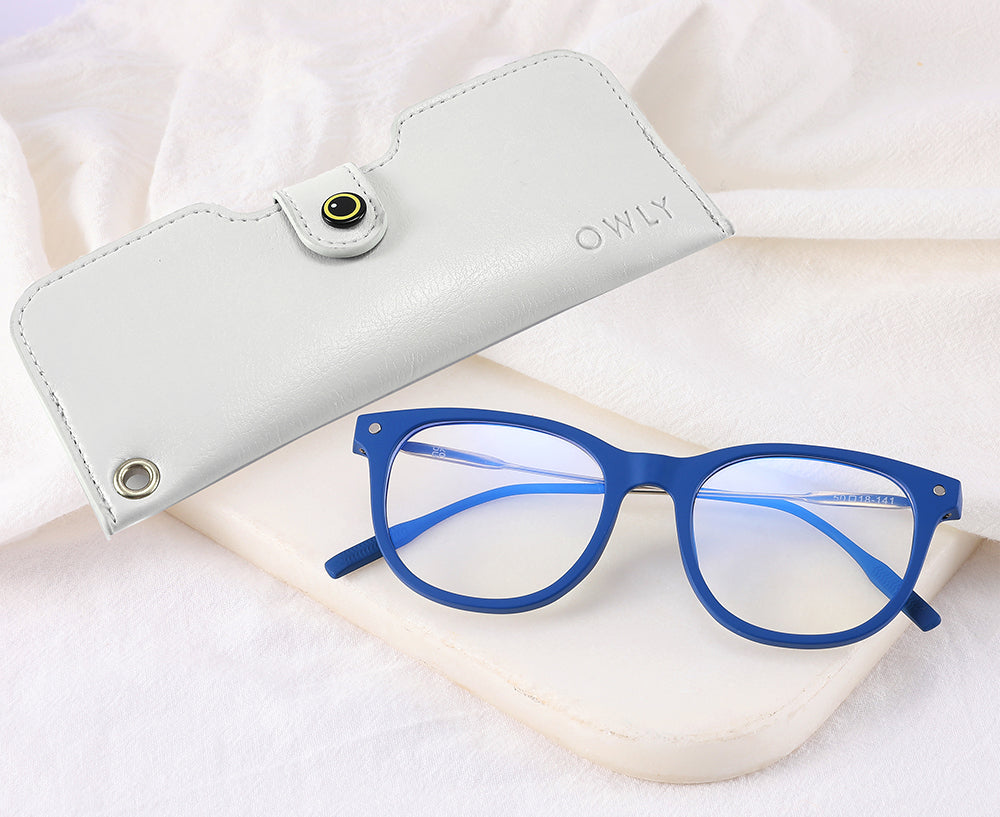FREE Shipping - Fits through your letterbox!
FREE Shipping - Fits through your letterbox!
Add description, images, menus and links to your mega menu
A column with no settings can be used as a spacer
Link to your collections, sales and even external links
Add up to five columns
Add description, images, menus and links to your mega menu
A column with no settings can be used as a spacer
Link to your collections, sales and even external links
Add up to five columns

How do I choose my reading glasses from a prescription?
February 13, 2023 3 min read
Choosing the right reading glasses from a prescription can be a confusing and overwhelming task, especially if you have never worn glasses before. However, with the right information and a few simple tips, you can find the perfect pair of reading glasses that will help you see clearly and comfortably. In this article, we'll go over the steps you should take to choose the best reading glasses from your prescription.
Step 1: Get an eye exam The first and most important step in choosing reading glasses from your prescription is to have a comprehensive eye exam. This exam will determine your exact prescription, which is the basis for finding the right glasses. An eye doctor will measure your visual acuity, check the health of your eyes, and determine your refractive error, which is the amount of correction your eyes need to see clearly.
Step 2: Determine your prescription Once you have an eye exam, your eye doctor will give you a prescription that includes your diopter strength and the type of correction you need. The diopter strength is measured in units, and it indicates the amount of correction your eyes need to see clearly. The higher the number, the stronger your glasses will need to be.
Step 3: Choose the right lens type Your prescription will also indicate the type of lens correction you need, including single vision, bifocal, or progressive lenses. Single vision lenses are used for correcting near or farsightedness, while bifocal lenses have two areas of correction in one lens, one for near vision and one for distance vision. Progressive lenses provide a seamless transition from distance vision to near vision, making them a popular choice for reading glasses.
Step 4: Choose the right frame The next step in choosing reading glasses from your prescription is to select the right frame. There are many different frame styles to choose from, including full-rim, half-rim, and rimless frames. Full-rim frames are the most traditional style and offer the most protection for your lenses. Half-rim frames are a popular choice for reading glasses as they are lightweight and provide a more streamlined appearance. Rimless frames are a great option if you want a minimalistic look, but they are also the most fragile and can be difficult to repair if they break.
Step 5: Consider your personal style and comfort When choosing reading glasses, it's important to consider your personal style and comfort. You can find frames in a wide range of colors, materials, and designs, so you can choose glasses that complement your style and look great on your face. It's also important to consider the weight and size of your frames, as well as the type of ear and nose pieces. Some glasses have spring-loaded hinges that allow them to expand and fit comfortably on your head, while others have adjustable nose pieces that help to prevent slipping.
Step 6: Try on different frames Once you have a basic idea of the type of frame you want, it's important to try on different frames to see how they fit and look on your face. You can do this at an optical shop or by ordering different frame styles online. You can also ask for feedback from friends or family members to help you determine which frame looks best on you.
Step 7: Add any additional features Finally, you may want to consider adding any additional features to your glasses, such as polarized lenses, scratch-resistant coatings, and anti-reflective coatings. Polarized lenses reduce glare and are great for outdoor activities, while scratch-resistant coatings help to keep your lenses looking clear and scratch-free. Anti-reflective coatings help to reduce glare and make it easier to see through your lenses, especially when you're using a computer or reading in bright light.
Leave a comment
Subscribe
Sign up to get the latest on sales, new releases and more …

